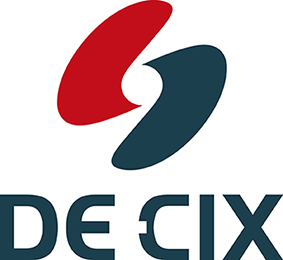When Time Stands Still: Why Redundant Connectivity Is Essential in the Digital Age
Dr. Thomas King, CTO at DE-CIX, explains why companies should secure their IT infrastructure via redundant lines, and what exactly lies behind the term redundancy.

© NanoStockk| istockphoto.com
In the age of cloud and software-as-a-service (SaaS), reliable connectivity plays a business-critical role for enterprises. Outages, even if not self-inflicted, can lead to serious consequences. Dr. Thomas King, CTO at DE-CIX, explains why companies should secure their IT infrastructure via redundant lines, and what exactly lies behind the term redundancy.
Twice in February this year, damaged fiber optic cables caused widespread connection failures in Germany alone. An incident in Dusseldorf affected up to 15,000 Internet connections, and another accident during construction work in Frankfurt led to Internet outages, especially in the northern districts of the city. For a portion of the German population, time stood still.
Connectivity – in particular to the cloud – has become essential to the smooth running of any modern business. As well as offering scalable infrastructure as required, the cloud allows staff on the road to access data and resources regardless of location, enables virtual collaboration for a distributed workforce, and provides access to the latest AI and analytics tools. Many companies now take the stance that their critical data and workloads are safer in the cloud than on-prem, with the implementation of business continuity and disaster recovery strategies directly in the cloud. Because the cloud is also always on, and always accessible. Until, of course, the fiber optic cable connecting you to it gets sliced in two by a bulldozer.
But why do individual incidents like these cause such serious incidents which affect so many people and businesses? The answer: if, as a company, you only set up your IT infrastructure in a “one-way” manner, you are taking a big risk and making your company particularly vulnerable to outages. The solution is to build redundant connectivity – a must in the digital age!
Redundancy creates resilience
Redundancy is key to protection against the effects of incidents that paralyze parts of the Internet infrastructure, such as in the Frankfurt and Dusseldorf examples. But what does that mean in concrete terms? In common parlance, “redundant” is usually equated with “superfluous,” but not in IT: The point here is that there should always be at least two paths leading to the destination. In a communications network, two locations should be physically connected via multiple independent cables. The system should be operated in an active/active mode by default. This means that all available lines are always partially utilized, and, in the event of an incident, the traffic of the failed line is redirected via the other transmission paths. This has advantages over an active/passive mode, where it is not automatically guaranteed that the alternative cable, which does not carry any data traffic until the time of switchover, will work completely reliably at the required moment. Transmission paths do not necessarily have to be fiber optic cables; depending on the application, DSL and mobile communications can also be considered.
Redundancy is not automatic
While redundancy through geo-diverse, i.e., geographically separated, data pathways is the standard between data centers and/or Internet Exchanges on the major data highways, this does not apply to what is known as the “last mile”, such as DSL connections to end users. If a connection is interrupted on the last mile – for example, if a cable is severed during construction work – it is often not possible for the data traffic to be rerouted on the network side via an Internet Exchange. Instead, users themselves need to ensure that there is already a connection to a higher level of the network via a second redundant line. In the private sector or in small businesses, this can be achieved via 5G-capable routers, for example.
Larger companies, on the other hand, should ensure that they are connected to the Internet via multiple, high-performance geo-diverse lines. However, initiative is required here: A resilient infrastructure must be planned, built, and regularly tested, in cooperation with one or more providers. Companies that connect directly to an Internet Exchange such as DE-CIX, and thus take a shortcut through the Internet, should also pay attention to redundant connectivity. The DE-CIX infrastructure, for example, is spread across close to 40 data centers in Frankfurt am Main alone.
Depending on how critical an application is, companies can thus establish multiple redundant, geo-diverse connections between themselves and DE-CIX. The next step is to check whether any affected applications will also work over a redundant line. This should be checked regularly, especially if changes have been made. If companies fall under the category of critical infrastructure (CRITIS) in Germany, independent audits are organized regularly. These include, for example, sectors such as energy and drinking water supply, and transport, but also food supply and finance.
Cloud and SaaS create entirely new connectivity requirements
In today’s digital age, the loss of an Internet connection is comparable to a power outage for many companies. In times of Office 365 and cloud storage, office computers are more or less useless without an Internet connection. A connectivity outage – be it for an afternoon or several days while repairs are being carried out – makes time stand still for not only your workforce, but potentially also for your production lines, your logistics and supply chain, and your customers. As a result, companies that want to be on the safe side for their business activities should treat the topic of redundancy as a top priority.
Dr. Thomas King has been Chief Technology Officer (CTO) at DE-CIX since 2018, and a Member of the DE-CIX Group AG Board since 2022. Before this, King was Chief Innovation Officer (CIO) at DE-CIX, starting in 2016. He has been instrumental in his role at keeping DE-CIX at the forefront of technological development of Internet Exchanges, establishing DE-CIX as a neutral Cloud Exchange, pushing the boundaries of what is possible in terms of high-bandwidth access technology and security solutions for IX platforms, and trailblazing the automation of IX services with the implementation of patch robots, the development of the DE-CIX API, and overseeing the DE-CIX self-service customer portal. Thomas King has also overseen the technical implementation of the international expansion in markets spanning from North America to Europe, the Middle East, India, Southeast Asia, and most recently Africa.
Please note: The opinions expressed in Industry Insights published by dotmagazine are the author’s or interview partner’s own and do not necessarily reflect the view of the publisher, eco – Association of the Internet Industry.





